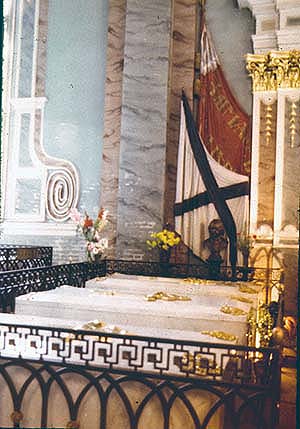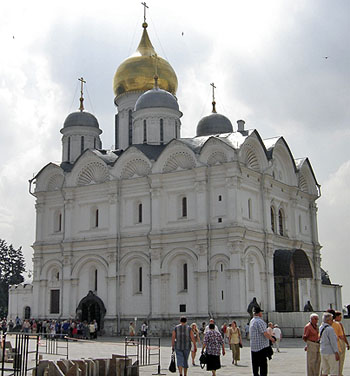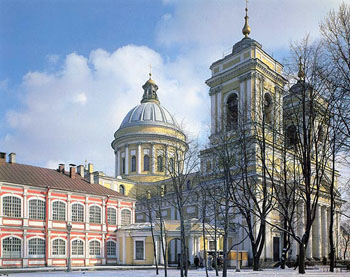OK. Here's a "short" answer to my question, Where were Russian rulers buried?
The Peter-Paul Cathedral in the Peter and Paul Fortress in St. Petersburg is the site of most of the graves of the Romanov rulers from Peter the Great onward, with Peter's grave is at the front right. (The remains of Nicholas II and his family were re-interred there in 1998). Originally, only the tsar and the immediate family could be buried in the cathedral, but in 1831 Nicholas I decreed that grand dukes and their families could also be buried there; by the end of the nineteenth century, there was not much room left, so a specific grand duke vault was built.
Burial rites were performed in the cathedral for the imperial families alone. Ekaterina, Peter the Great's daughter who died in 1708 at the age of 18 months, was the first to be buried in the cathedral. She was followed by the wife of Peter's son and then Aleksei, Peter's son, himself. On 10 March 1725 Peter the Great and his daughter Natalia were buried, and in 1727 Catherine I (1683-1727), Peter's wife, was buried next to them.
Two Romanov tsars (not counting Nicholas II and his family) did not make it into the Peter-Paul Fortress.
Peter II (1715-1730), grandson of Peter the Great, son of Peter's son Aleksei, became tsar upon the death of Catherine I, Peter's second wife, in 1727. In Moscow, in early January 1730 he caught smallpox and died 19 January 1730. He was buried in the Archangel Cathedral of the Kremlin (see below). His death ended the male line of the Romanov Dynasty.
Ivan VI (1740-1764) lead a truly unfortunate life. His great aunt, Empress Anna I (1693-1740) who was the daughter of Peter the Great's step-brother Ivan V (1666-1696), adopted Ivan as heir to the throne of Russia on 5 October 1640--Ivan was two months old. Anna died on 28 October, and Ivan VI became the new tsar with a regency set up. In November 1741, the regency was overthrown by the Imperial Guard in favor of Peter the Great's illegitimate daughter, Elizabeth I (1709-1762). Ivan VI spent the next twenty-odd years in one prison after another, essentially in secret isolation. When Catherine the Great assumed the throne of Russia by having her husband, Peter III (1728-1762) murdered, it was not good to have another legitimate tsar still hanging around somewhere. When a plot unraveled to free Ivan from his imprisonment, he was executed. He was secretly buried in a hidden place near the walls of the Shlisselburg Fortress. (The fortress is located where the Neva River flows from Lake Ladoga.) The grave was later destroyed.

Flowers adorn the tomb of Peter the Great in the back.

The large tombs (green and red) are for Alexander II and his wife. Photo by Bev Blois.


